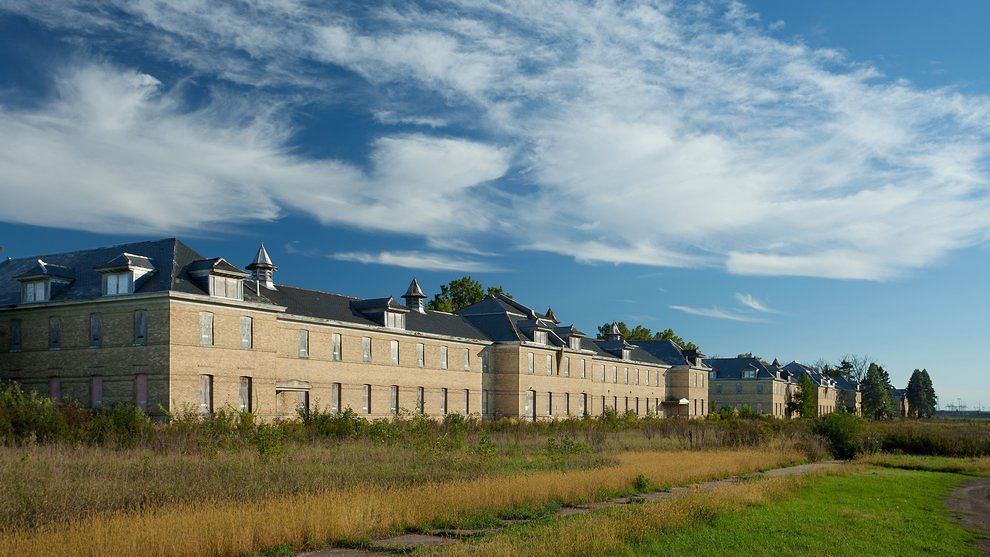The Minnesota Department of Natural Resources (MN DNR) Parks and Trails Division through a lease agreement with Dominium Development and Acquisition, LLC (Dominium) has proposed to rehabilitate 26 historic buildings within the Upper Post area of Fort Snelling State Park into approximately 200 rental housing units. The Upper Post buildings were constructed in the late 19th and early 20th centuries, and the post was the departure point for soldiers serving in the Spanish-American War and both World Wars.
The proposed affordable housing units would be rented to individuals and families that meet state requirements for moderate income housing (incomes up to 60% of area median), with a preference for military veterans and their families. All housing units will be constructed within the existing building footprints, using the historic building exteriors and will comply with the Secretary of the Interior’s Standards for Historical Rehabilitation (the “Secretary’s Standards”) to qualify for historical tax credits. New construction will include a commons area with outdoor swimming pool, sidewalks, landscaping, surface parking, construction of new detached garages, construction of new streets, stormwater filtration basins, utility improvements, and reconstruction of existing streets and driveways.
Braun Intertec provided extensive environmental services including hazardous materials assessment (lead and asbestos are found throughout the historic structures), investigation of shallow soils for impacts related to historic uses, and preparation of an Environmental Assessment Worksheet (EAW). The EAW is an environmental review document mandated by Minnesota statute, like an Environmental Assessment (EA) under the National Environmental Policy Act (NEPA), that requires review of natural resources, cultural and historic resources, and impacts to human health and safety. The EAW further provides a mechanism for public notice, a review of permit requirements, and the basis to determine if a more detailed Environmental Impact Statement (EIS) is necessary.
The EAW was prepared on behalf of Dominium and the MN DNR Parks and Trails Division who is the proposer for the project. A key factor in the success of this project was multiple meetings between all involved stakeholders that were held in advance of work beginning on the EAW. This allowed for very clear expectations to be set on how the EAW should be completed including the level of detail that would be required and the aspects that would be reviewed most critically by the Responsible Governmental Unit (RGU), the MN DNR Division of Ecological and Water Resources. With the location of Fort Snelling and the Upper Post area directly in the Twin Cities metropolitan area, adjacent to both the Mississippi and Minnesota Rivers and a National Wildlife Refuge, within the boundaries of state park, and immediately adjacent to the Minneapolis/St. Paul International Airport, extensive evaluation of the surrounding area was required.
While significant natural resources are present within a mile of the Upper Post area (mainly in the Minnesota River Valley and along the Mississippi River), they will be largely undisturbed by the proposed project since all the proposed construction will occur within the previously developed Upper Post area and primarily inside the historic buildings. Significant mitigation measures were proposed in the EAW for removal of hazardous materials, preservation of historic structures during redevelopment, attenuation of airport noise inside living structures, and removal of bats from the buildings. Notable challenges of the EAW process were coordination with all stakeholders involved, working with a subcontractor to thoroughly evaluate the historical and cultural resources within the project area and addressing public concerns about airport noise. The EAW underwent public review and was approved by the RGU as sufficient without need for an EIS.
*Header photo by Philip Prowse. Courtesy of the National Trust for Historic Preservation.

